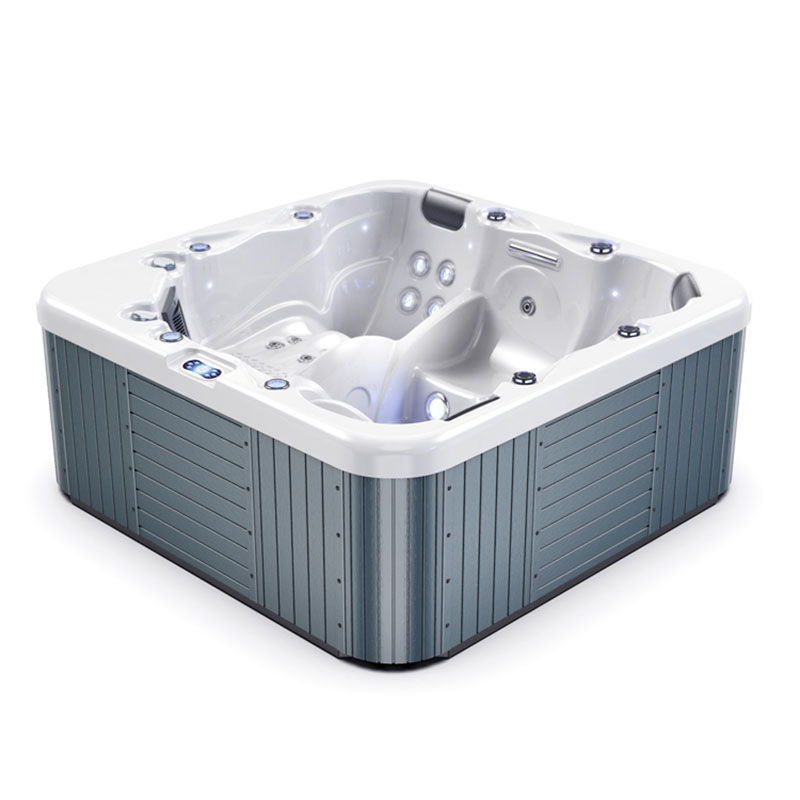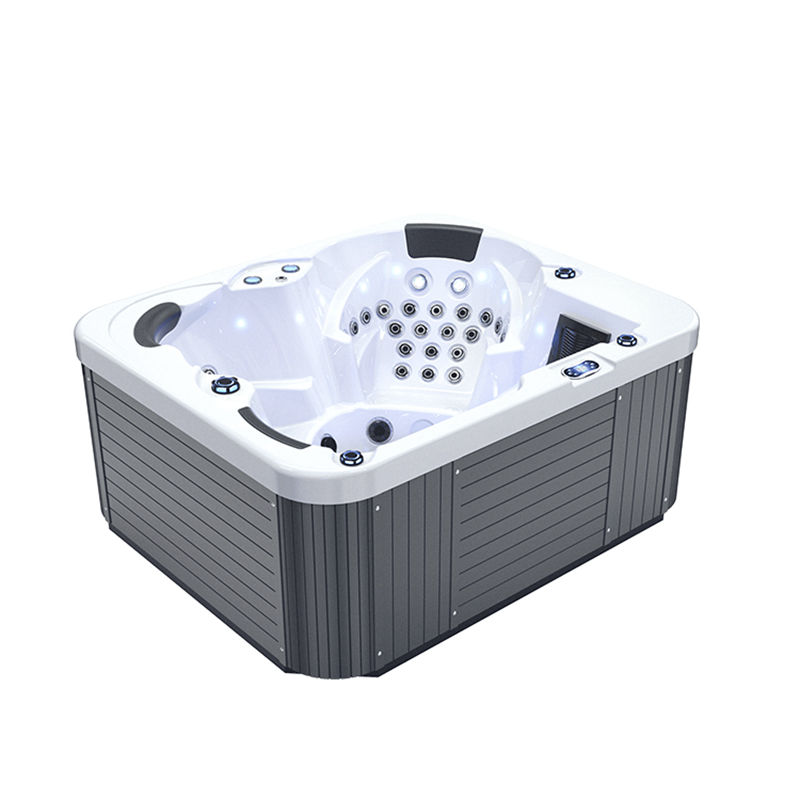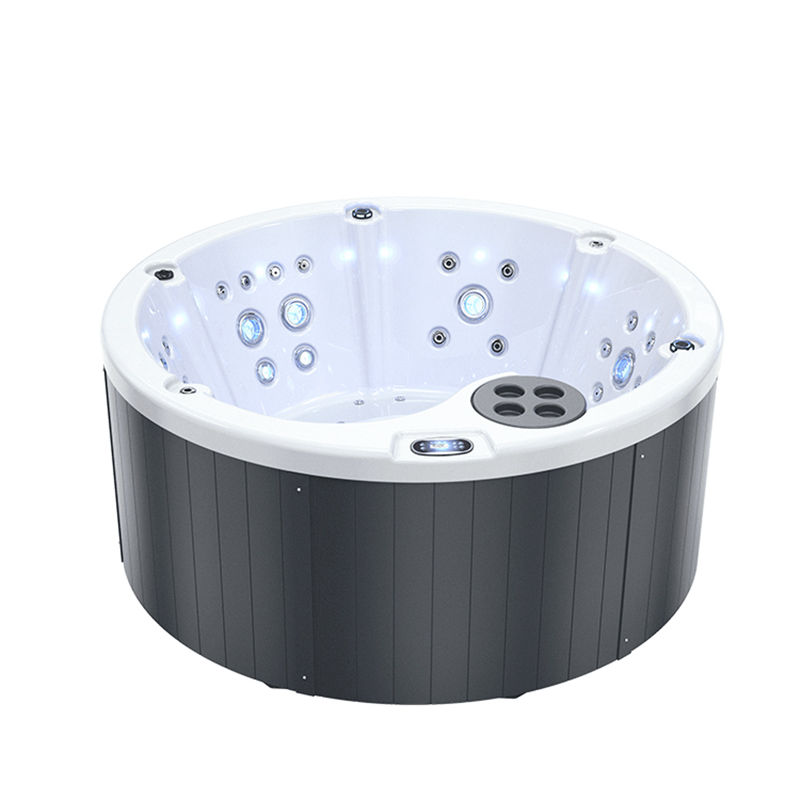Whirlpool spa hot tubs are popular leisure facilities in homes, hotels, and resorts for their comfortable, constant-temperature water flow and massage features. However, long-term use and improper water quality management can lead to scale and bacterial growth. This not only affects device performance but also poses potential health risks.
This article will address the most pressing concerns of whirlpool spa hot tub users, focusing on the causes of scale and bacteria, health hazards, prevention methods, daily maintenance strategies, and practical usage tips.
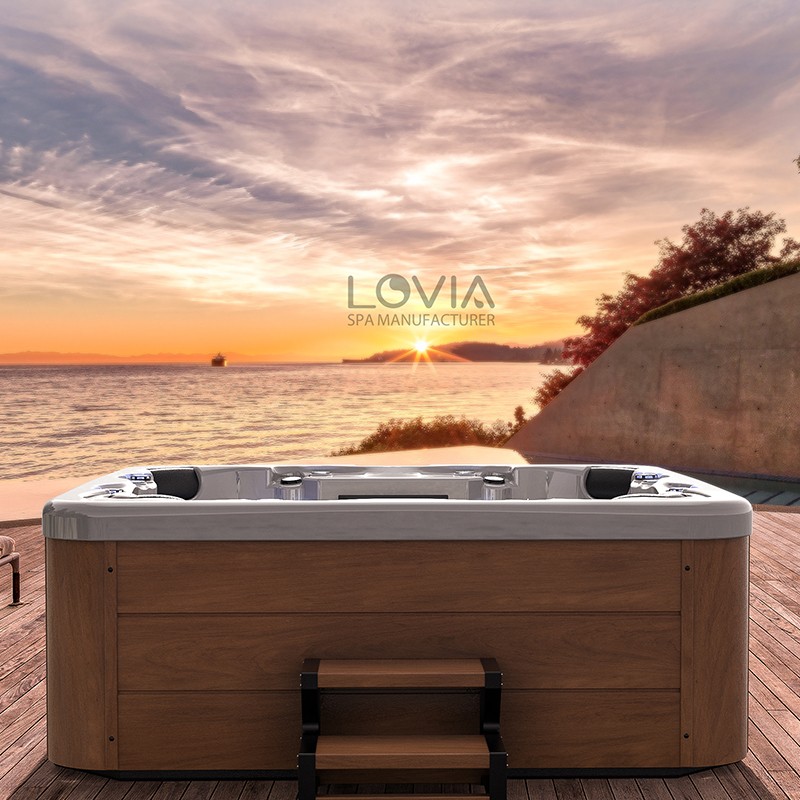
Why are whirlpool spa hot tubs prone to scale formation?
Scale is primarily a hard deposit formed by the accumulation of minerals such as calcium and magnesium in water under high temperatures. The water temperature in a whirlpool spa hot tub is typically between 38°C and 42°C, which is both comfortable for the human body and provides an ideal environment for scale formation.
1. What factors accelerate scale formation?
• High water hardness: Water in hard water areas contains high levels of calcium and magnesium ions, which easily deposit on pipes, shower heads, and heater surfaces.
• Prolonged high-temperature soaking: When a whirlpool spa hot tub maintains a constant temperature for extended periods, minerals can easily precipitate in the hot water, forming scale.
• Inadequate water circulation: Unstable pump operation or poor water flow in pipes can cause localized overheating, increasing the risk of scale formation.
• Lack of regular cleaning: If filters, shower heads, and pipes are not cleaned for extended periods, minerals can accumulate and form stubborn scale.
2. How does scale affect a whirlpool spa hot tub?
• Reduced heating efficiency: Scale coats the heating element, slowing heating speed and increasing energy consumption.
• Clogged shower heads and pipes: Uneven water flow from shower heads reduces the massage effect, and some nozzles may even become completely clogged.
• Accelerated equipment aging: Long-term scale accumulation can corrode metal parts and shorten the lifespan of the pump, heater, and pipes.
• Impacted water quality: Scale accumulation can cause turbidity in the water, reducing user comfort.
Therefore, timely prevention and removal of scale is crucial to the functionality and user experience of a whirlpool spa hot tub.
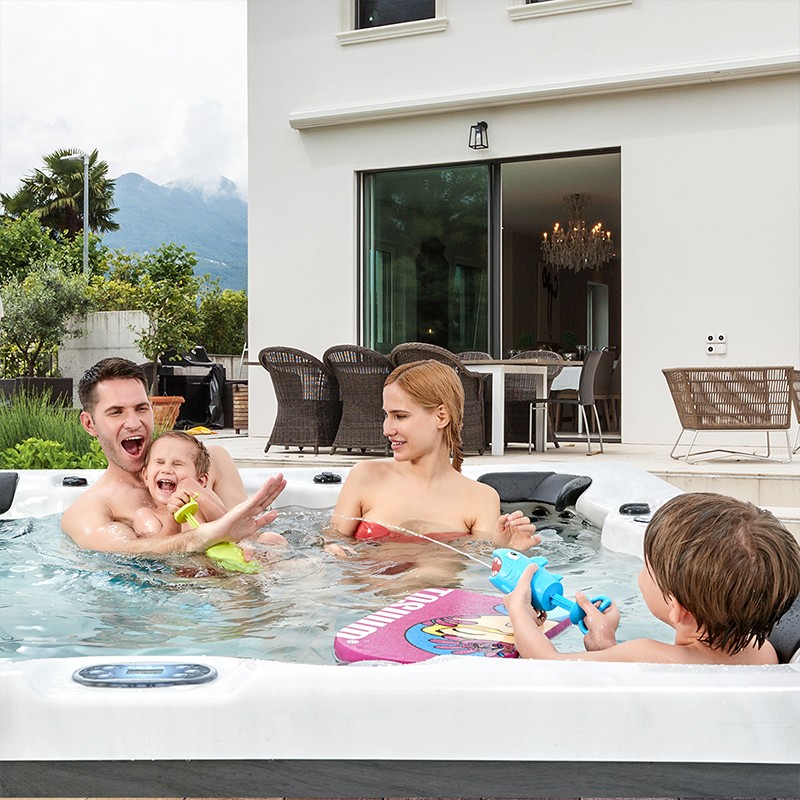
Why do bacteria grow in whirlpool spa hot tubs?
Warm, humid environments are ideal for the growth of bacteria and microorganisms. While the water temperature in a whirlpool spa hot tub is comfortable for human consumption, it also creates an ideal growth environment for many bacteria.
1. Which bacteria are most likely to grow in a whirlpool spa hot tub?
• Legionella: This can cause Legionnaires' disease, which is particularly harmful to those with weakened immune systems.
• Escherichia coli (E. coli): This can come from the user or the environment, leading to intestinal infections.
• Staphylococcus aureus: This can cause skin infections.
• Mold and algae: Long-term water accumulation or inadequate filtration can cause water turbidity and an unpleasant odor.
2. What health risks can bacteria pose?
• Skin infections: Using an unclean whirlpool spa hot tub can cause skin inflammation, itching, redness, or a rash.
• Respiratory diseases: Inhaling pathogens in steam or mist can cause coughing, sore throats, and even lung infections.
• People with weakened immune systems are at higher risk: The elderly, children, and those with chronic illnesses are more susceptible to bacteria and may develop fever or infection.
3. High-risk scenario analysis
• Public whirlpools, spas, and hot tubs are more susceptible to bacterial transmission if they are not adequately disinfected.
• Prolonged periods of unrepaired water in home whirlpools and spas, especially in low-flow or high-temperature environments, can accelerate bacterial growth.
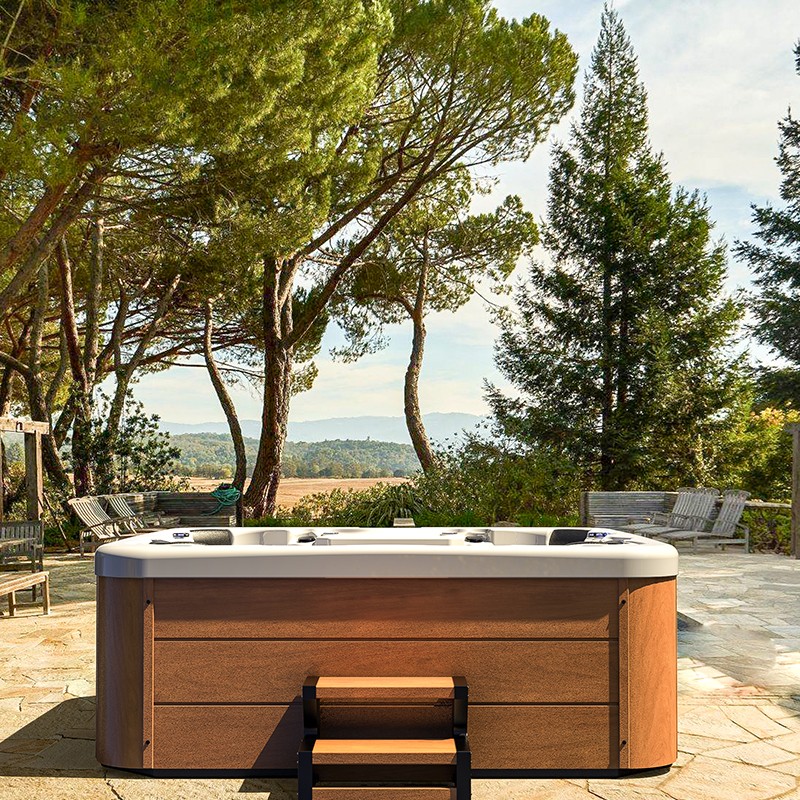
How can scale be prevented in whirlpools and spas?
While scale primarily affects equipment performance, it can be effectively prevented through scientific measures, extending the lifespan of the whirlpool and spa and ensuring comfortable water quality.
1. Is using softened or low-hardness water effective?
Softened water significantly reduces the rate of scale formation by removing calcium and magnesium ions from the water. Recommendations:
• Install a water softener, suitable for areas with hard water.
• Use a commercially available water conditioner to reduce the mineral concentration in the water.
• Regularly test water hardness to ensure the softening system is functioning properly.
2. How can I maintain smooth water circulation?
• Ensure the water pump is functioning properly to prevent water stagnation in dead spots in the pipes.
• Regularly clean the filter and showerhead to maintain unimpeded water flow.
• When not in use for extended periods, briefly activate the circulation system to keep the water flowing and reduce localized scale buildup.
3. Regularly clean the surface of the whirlpool spa hot tub
• Soak the showerhead and heater surfaces with a special detergent or white vinegar solution to easily dissolve scale.
• Manually wipe the pipes and showerhead to prevent mineral deposits from forming stubborn scale.
• Keep the whirlpool spa hot tub lid clean to prevent dust and minerals from entering the water.
How can I control bacterial growth in my whirlpool spa hot tub?
Controlling bacterial growth is a key measure to ensure healthy use. Scientific methods can effectively reduce health risks.
1. Regularly disinfect and sterilize
• Use a chlorine or bromine disinfectant, following the recommended dosage and frequency specified in the instructions.
• UV disinfection or ozone systems can be used as supplementary measures to improve water quality.
• Periodically replace some of the water to prevent the long-term accumulation of bacteria and impurities.
2. Keep the filtration system clean
• Clean or replace the filter regularly to prevent impurities from accumulating and becoming a breeding ground for bacteria.
• Periodically flush the pipes, showerheads, and pump interior to prevent dead spots from becoming breeding grounds for bacteria.
• Check the filter condition before use to ensure unimpeded water circulation.
3. Maintain an appropriate water temperature
• Water temperatures that are too low will reduce the effectiveness of disinfectants, while water temperatures that are too high can irritate the skin.
• The recommended water temperature for whirlpool spa hot tubs is 39°C to 41°C, which is comfortable and conducive to the effectiveness of disinfectants.
• During extended use in winter, monitor the water temperature regularly to prevent bacterial growth.
4. User Hygiene Precautions
• Rinse your body before use to reduce the entry of bacteria and oils into the water.
• Avoid using cosmetics, skincare oils, or essential oils in whirlpool spa hot tubs to avoid affecting water quality.
• Users should suspend use of their whirlpool spa hot tub if they have skin infections, skin breaks, or other medical conditions.
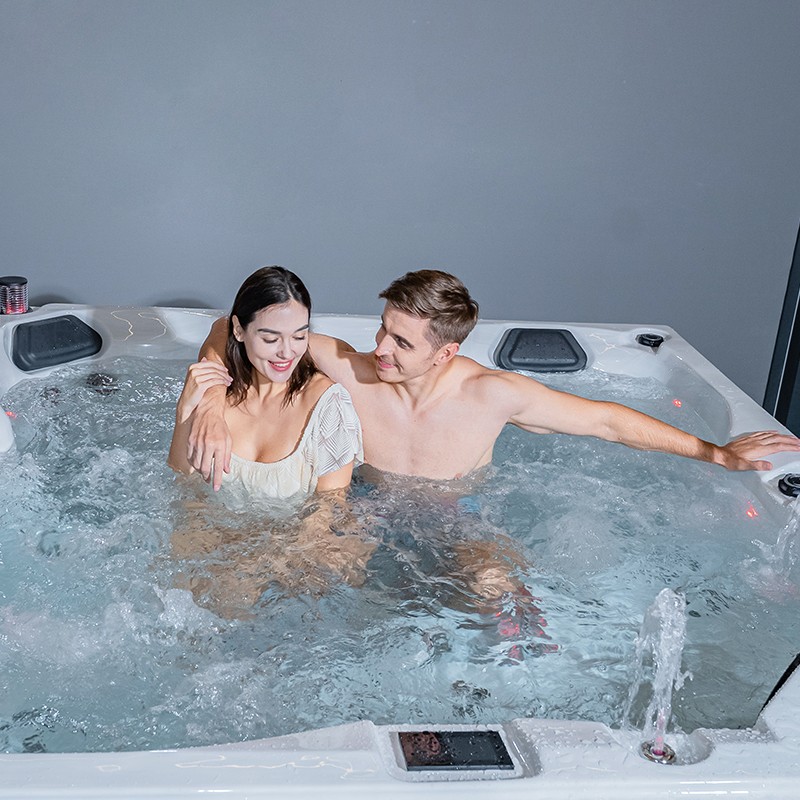
What are some routine maintenance and management strategies?
To maintain long-term water quality and equipment safety, whirlpool spa hot tub users should establish a scientific routine maintenance process.
1. Water Quality Testing
• Regularly test the pH, hardness, and residual chlorine content of the water.
• Adjust the dosage of disinfectant and water conditioner based on the test results to maintain stable water quality.
• Use a water quality testing kit to ensure that water quality meets safety standards.
2. Regular Equipment Maintenance
• Clean the showerhead and filter monthly to maintain smooth water flow.
• Inspect the pump, heater, and piping quarterly to prevent scale and bacterial accumulation.
• Drain the water when not in use for extended periods and keep the equipment dry to prevent bacterial and mold growth.
3. Usage Records and Plans
• Keep usage records, including water temperature, soaking time, and disinfection intervals.
• Regularly evaluate the condition of the equipment and adjust the maintenance plan based on frequency of use and changes in water quality.
• Record water quality test data for long-term management and timely problem detection.
How harmful are scale and bacteria problems in whirlpool spa hot tubs to health?
In general, scale primarily affects device performance and user comfort, while bacteria, if left uncontrolled, can pose certain health risks.
• Scale: It primarily reduces heating efficiency and massage effectiveness and does not directly infect the human body, but long-term accumulation may affect the overall performance of the whirlpool spa hot tub.
• Bacteria: Inadequate disinfection or inadequate water quality management can lead to skin infections, respiratory problems, or other health risks.
• High-risk groups: Children, the elderly, and those with weakened immune systems should pay special attention to water hygiene and avoid using contaminated water.
Through scientific disinfection, regular cleaning, and proper use, a whirlpool spa hot tub can minimize health risks while ensuring a comfortable experience.
What materials do you use for spa shells?
We primarily use premium acrylic from Aristech, known for its durability and High quality surface finish. This material ensures resistance to UV damage, scratches, and water chemical reactions. For Buyers, this means less maintenance and longer product life, making it an ideal choice for both Cheap and High-end projects.
Our Manufacturer status enables us to Buy materials in bulk and pass the cost efficiency into Sales Prices. Quotes can include detailed material specifications for Purchasing teams.


